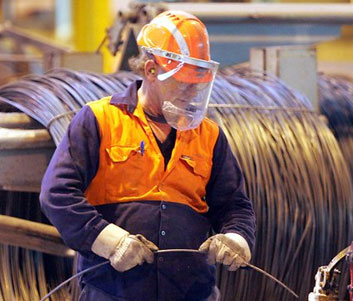
- Home
- Steel Fabrication
- Advanced Steel Fabrication
- Architectural Steel Fabrication
- Custom Steel Fabrication
- Estimation Steel Fabrication Costs
- Steel Fabrication Construction
- Steel Fabrication Design
- Steel Fabrication Industry
- Steel Fabrication Jobs
- Steel Fabrication Legal Requirements
- Steel Fabrication Structures
- Steel Fabrication Training
- Steel Fabrication Welding
- Structural Steel Fabrication
- What is Steel Fabrication
Steel Fabrication Industry
The steel fabrication industry is massive across the world and involves the production of thousands of different products. Everything from the automotive industry to the retail and agricultural sectors rely on steel fabricators to carry out projects and the work that they carry out is essential in people’s everyday lives, from the places in which they live to the buildings in which they work.
What is steel fabrication?
The steel fabrication industry involves skilled workers who are able to cut, form and weld steel based on engineering drawings and models provided by clients. It is often hot work and involves the constant use of potentially dangerous equipment; for these reasons fabricators require a high level of training before they are able to operate in this line of work.
Steel fabricators are required to be able to accurately interpret drawings provided by engineers and draughtsmen. From these drawings they need to be able to mark out, cut and bend the steel to match the specifications provided, they then need to weld together the steel as the drawings suggest. To put it simply a steel fabricator is required to bring a drawing to life.
Fabricators are often expected to carry out both the fabrication of the steel and the welding, although sometimes will focus on just one aspect. When training in steel fabrication you are generally given the skills to carry out both aspects.
Getting into the steel fabrication industry
A high level of training is required if you are to be successful in the steel fabrication industry. For those that are qualified, a high level of pay can be expected as can the reward of seeing your work in various areas of manufacture.
No entry level qualifications are needed to pursue a career in steel fabrication and the industry is equally suited to those looking for a change of career as it is for school leavers. There are generally two ways to gain the qualifications needed to get into the industry, this can be in the done by gaining an apprenticeship or going to college.
An apprenticeship is an excellent choice for school leavers and will allow you to learn the skills needed on the job and earn a small wage in the process.
College is open to people of all ages and is more easily accessible than an apprenticeship which often has limited places. College will require fulltime study for two or three years to gain the required NVQ’s to be competent in all aspects of fabrication
What skills are learned?
The steel fabrication industry apprenticeships and college courses will give trainees skills in both fabrication and welding. The skills one can expect to learn are as follows:
- Learn to read engineering drawings
- Learn to use industrial equipment
- Technical drawings including CAD
- Aspects of welding including Tungsten Inert Gas welding, Metal Inert Gas Welding, Manual Metal Arc welding, Metal Arc Gas welding.
- Key skills
- Fabricating/welding theory
- Basic metallurgy
- Pattern development
Employment rights and responsibilities and safety requirements will also be encompassed into training.
